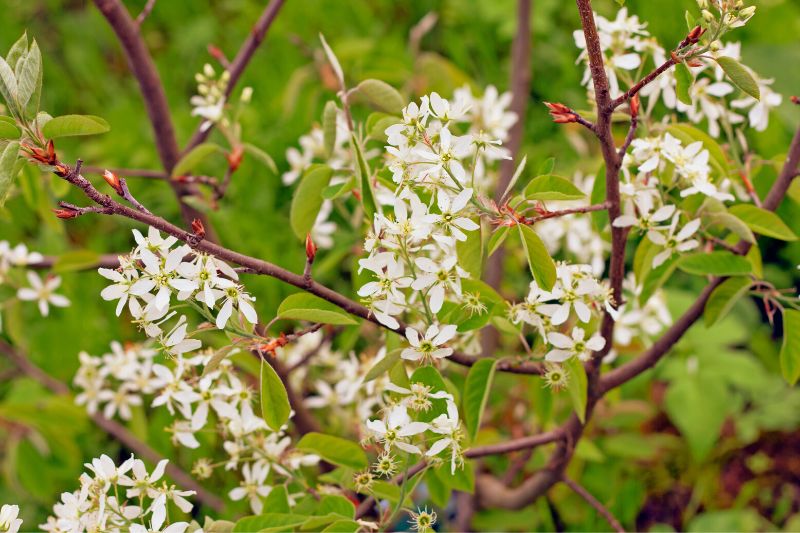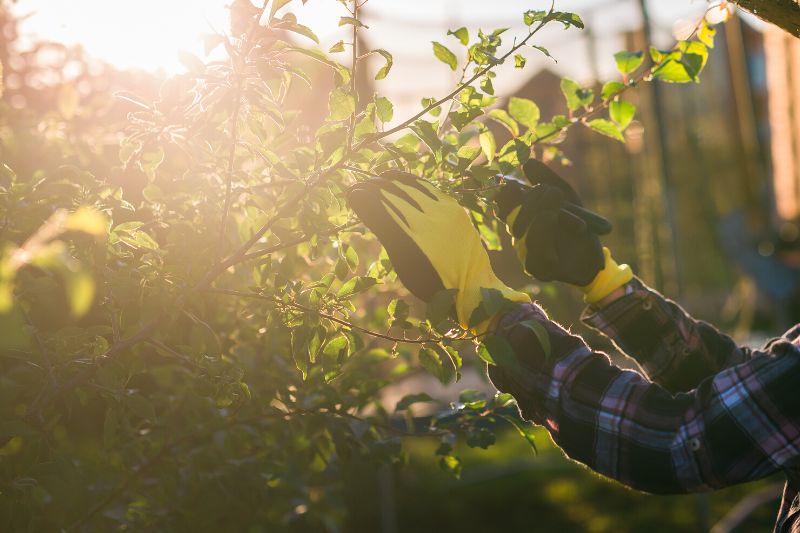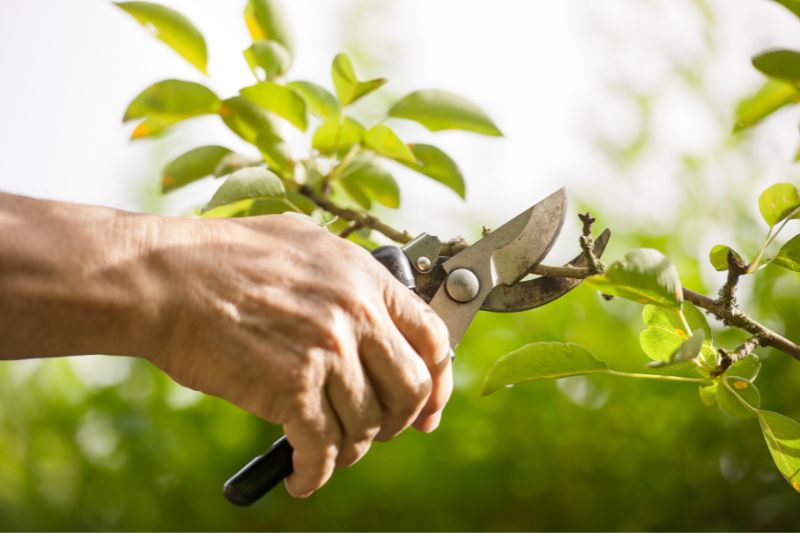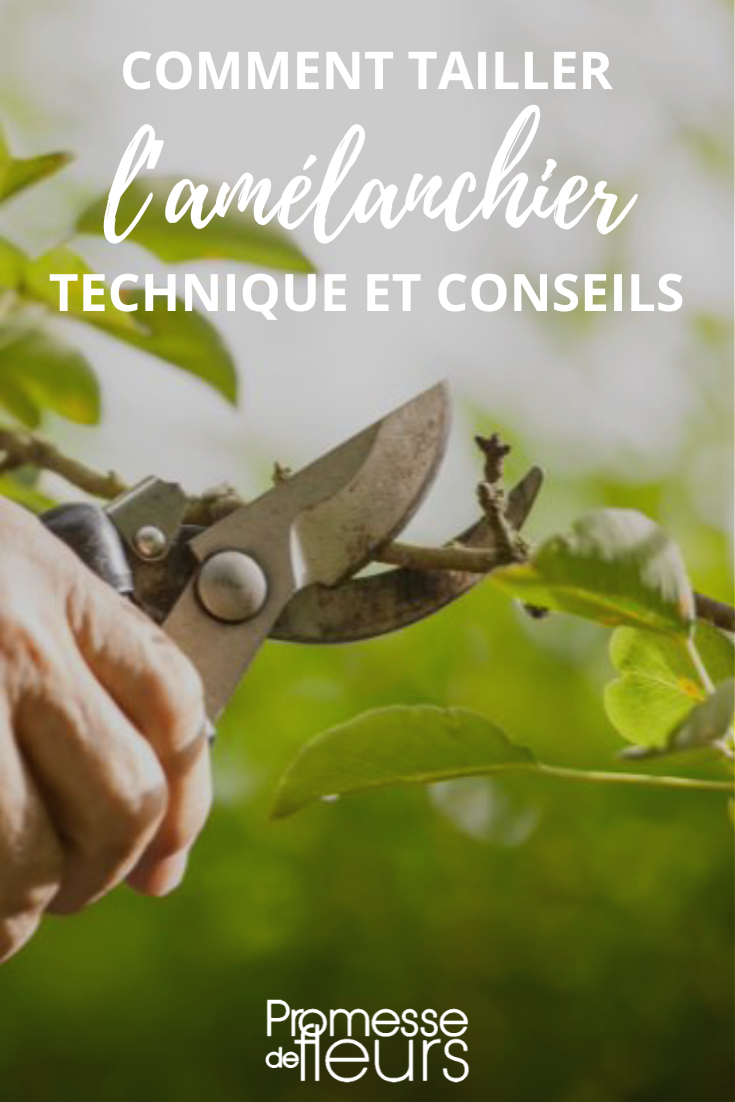With its abundance of star-shaped white flowers, sometimes tinged with pink, the serviceberry is a highly decorative spring-flowering bush. In April and May, it becomes covered in clusters of flowers, some of which offer a subtle vanilla fragrance. In summer, it bears edible purple berries, and in autumn, its foliage takes on beautiful, fiery warm colours before becoming deciduous in winter. Slow-growing, it can reach a height between 2 and 12 metres. Among the most cultivated species are the Common Serviceberry or A. ovalis, the Amelanchier lamarckii or Lamarck's Serviceberry, and the Canadian Serviceberry or Amelanchier canadensis. With varying habits depending on the species, the serviceberry generally forms a coppice shoots with multiple trunks at the base. Easy to grow, it can be planted as a standalone specimen in the garden or as part of a hedge. To encourage flowering and maintain an airy shape, here's how to prune the serviceberry.
Why prune?
Pruning is not essential. It is a maintenance pruning that mainly involves removing crossing or dead branches, achieving a fuller and more vigorous habit, promoting better flowering, and giving the bush a more balanced shape.
When to prune?
- As with all spring-flowering bushes, pruning should be done after flowering, within 1 to 2 months.
- If you prune too late, you risk removing the buds that form in summer to flower the following spring, thus missing out on flowering the next year.
- Another important point if you use the serviceberry as a hedge: since 2013, the European Parliament Regulation has declared "the prohibition of pruning hedges and trees during the bird breeding and nesting period." We therefore advise against pruning your hedges between 15th March and 31st July, to promote biodiversity, as well as bird and insect populations. When pruning your hedge, take precautions not to disturb birds and leave nests in place. This way, you can better enjoy their songs and presence in your garden.
How to prune?
Technique
- The idea is to thin out the branches if they are too dense or crossing, remove dead wood and older shoots, and encourage the emergence of new floriferous shoots at the base of the bush.
- Prepare sharp and disinfected tools with alcohol to aid healing and prevent disease transmission. Use secateurs, saws, or shears and hedge trimmers depending on branch size and the bush's use (standalone or hedge).
- Make the cut at an angle, about 0.5 to 1 cm above a leaf or bud.
- Remove dead wood as well as overly thin, damaged, or crossing shoots to allow more light into the centre of the stump and thin out the branches.
- Then cut back spent flower shoots: at their base for very long shoots and shortening them by 1/3 for moderately long ones.
Tools
- Small secateurs for small branches, curved-blade loppers or pruning saw for larger branches.
- Shears or hedge trimmer for hedges
Further reading
Discover:






































Comments